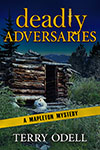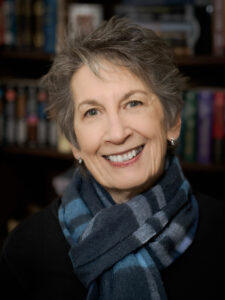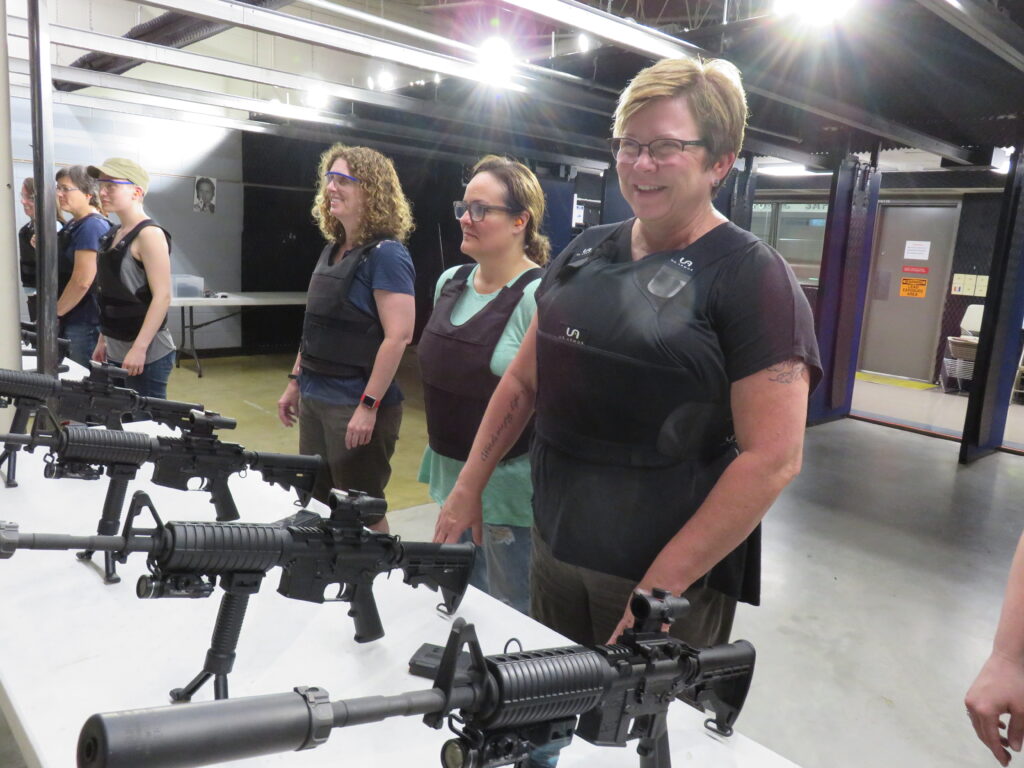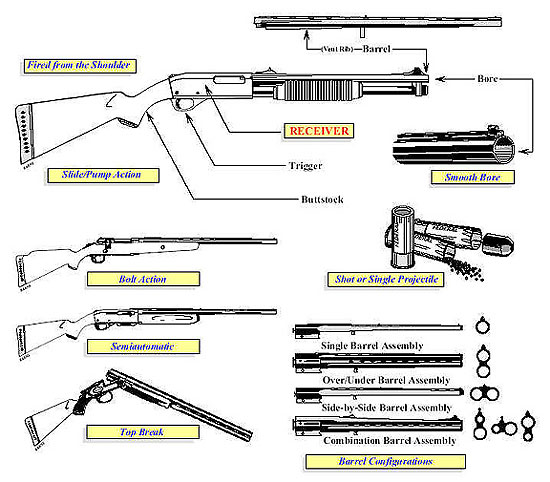Back From Killer Con
Terry Odell
 Greetings, TKZers. I’m back from a wonderful, exhausting 4 days at Killer Con. The getting there and back, not so wonderful, but that’s becoming my norm for any travel requiring an airplane. “If you have time to spare, go by air.”
Greetings, TKZers. I’m back from a wonderful, exhausting 4 days at Killer Con. The getting there and back, not so wonderful, but that’s becoming my norm for any travel requiring an airplane. “If you have time to spare, go by air.”
As writers going to conferences, we’re used to panels on aspects of craft, or workshops given by featured authors. Not so Killer Con. I touched a little on this in my last post.
I’ll be recapping many of the sessions I attended on my own blog, but here’s a basic overview. And a few pictures. Again, no tables filled with smiling authors at the front of a room—except for the final Q&A with all the experts.)
What could we learn about? These were the session choices:
Body Trauma and Gunshot Wounds
Crime Writer’s Guide to Murder Investigation
CSI: Processing a Shooting Scene
Evidence Collection, Processing, and CSI Techniques
Homicide Investigation: The Reel to Real Story
Interview and Interrogation
Overdose Death Investigation
Processing and Preservation of Fingerprint Evidence
Reading and Interpreting Bloodstain Patterns and Spatter
TI Training – Interactive Use of Force Simulation
Using Art to Solve Crimes
Virtual Reality – Mental Health Training Simulator
That’s a lot to choose from, and other than the ‘whole group’ sessions, we could attend only six.
To start. The conference sessions were held at the Northwest Wisconsin Technical Institute in Green Bay, Wisconsin, where their own instructors and local first responders, crime scene techs, and medical personnel were there to enlighten us. We did have presentations by authors, because the goal of the conference was to help us bring reality to our books. Retired cop/authors included Dr. Katherine Ramsland (want to know anything about serial killers? She’s your go-to person.), Michael A. Black, Bruce Robert Coffin.
A few random takeaways.
It’s blood spatter, not splatter. Detectives don’t lead the way on raids. SWAT goes in first. Unless your book is set before or during WWII, there’s no smelling of cordite. It’s gunpowder. Cordite hasn’t been around since 1945. Gallows humor among cops is real. If they drink whisky, it’s cheap. Everyone inside a crime scene has to sign a log, including their reason for being there, which means they might be subpoenaed to appear in court. (Good way to keep the brass out.) When setting a perimeter, overestimate. You can shrink it but not expand it. (I may have made this mistake in one of my books.) Everything is done with court appearances in mind. Keeping an open mind is critical. And much more.
 I had hands-on practice in fingerprinting. Coming from a dry climate and spending lots of hours tapping a keyboard, mine were very hard to collect. We got to do presumptive testing for blood (using synthetic blood). Watched a demonstration (up close) of using Blue Star (cheaper and easier to use than Luminol, preferred by the techs here).
I had hands-on practice in fingerprinting. Coming from a dry climate and spending lots of hours tapping a keyboard, mine were very hard to collect. We got to do presumptive testing for blood (using synthetic blood). Watched a demonstration (up close) of using Blue Star (cheaper and easier to use than Luminol, preferred by the techs here).
The first evening, we had a presentation by Carrie Stuart Parks who talked about how one determines if someone’s lying. I made an attempt to capture some of the highlights on my blog Monday.
 The next morning, we arrived at NWTI and were led to a large lecture hall where they’d staged a shooting scene for us. We watched as the people who would be dealing with the scene came in —patrol officers, EMS, detectives, CSI, and the ME, and they all performed their respective duties.
The next morning, we arrived at NWTI and were led to a large lecture hall where they’d staged a shooting scene for us. We watched as the people who would be dealing with the scene came in —patrol officers, EMS, detectives, CSI, and the ME, and they all performed their respective duties.
Another group session was a lecture by Dr. Ramsland who stressed the importance of observation. We all learned a new acronym: WYSIATI: What You See Is All That Is, which is what she referred to as “My Side Bias” or “I wouldn’t do it that way.”
 After she finished, we were teamed up in groups of 4 and we walked through a crime scene taking LOTS of pictures. Our objective wasn’t to solve the crime, but rather to prioritize 5 questions we would want answered, and to compare what we saw with the survivor’s narrative of what happened.
After she finished, we were teamed up in groups of 4 and we walked through a crime scene taking LOTS of pictures. Our objective wasn’t to solve the crime, but rather to prioritize 5 questions we would want answered, and to compare what we saw with the survivor’s narrative of what happened.
The next day, we gathered once again to compare notes, and to discover what really happened, as our scenario was based on a real life crime.
One other highlight. The keynote speaker was Charlaine Harris. Her words were those of thanks and took approximately five minutes. Given how exhausted everyone was (not to mention there was a bar set up in the banquet room), this was a welcome change from typical keynote speakers. Judging from the line at her signing table, she was a popular addition to the conference lineup.
And, on another note, since I’ve been letting my WIP marinate before I dive into my edits/revisions before sending it to my editor, I played around with Substack. I decided it would be a good place for sharing some of my “just for fun” writing. If you’re interested (the first posts are more of an introduction to “me”) you can check it out.
How can he solve crimes if he’s not allowed to investigate?
 Gordon Hepler, Mapleton’s Chief of Police, has his hands full. A murder, followed by several assaults. Are they related to the expansion of the community center? Or could it be the upcoming election? Gordon and mayor wannabe Nelson Manning have never seen eye to eye. Gordon’s frustrations build as the crimes cover numerous jurisdictions, effectively tying his hands.
Gordon Hepler, Mapleton’s Chief of Police, has his hands full. A murder, followed by several assaults. Are they related to the expansion of the community center? Or could it be the upcoming election? Gordon and mayor wannabe Nelson Manning have never seen eye to eye. Gordon’s frustrations build as the crimes cover numerous jurisdictions, effectively tying his hands.
Available now.
 Terry Odell is an award-winning author of Mystery and Romantic Suspense, although she prefers to think of them all as “Mysteries with Relationships.”
Terry Odell is an award-winning author of Mystery and Romantic Suspense, although she prefers to think of them all as “Mysteries with Relationships.”



 A great example of this is in a current book I read a few weeks ago, where the main character “racked” a shotgun shell into the chamber of her rifle. A quick message to an expert, such as Kill Zone contributor and weapons expert John Gilstrap, and the writer would have learned that racking a shotgun shell into the chamber is an action used for shotguns, not rifles.
A great example of this is in a current book I read a few weeks ago, where the main character “racked” a shotgun shell into the chamber of her rifle. A quick message to an expert, such as Kill Zone contributor and weapons expert John Gilstrap, and the writer would have learned that racking a shotgun shell into the chamber is an action used for shotguns, not rifles.
